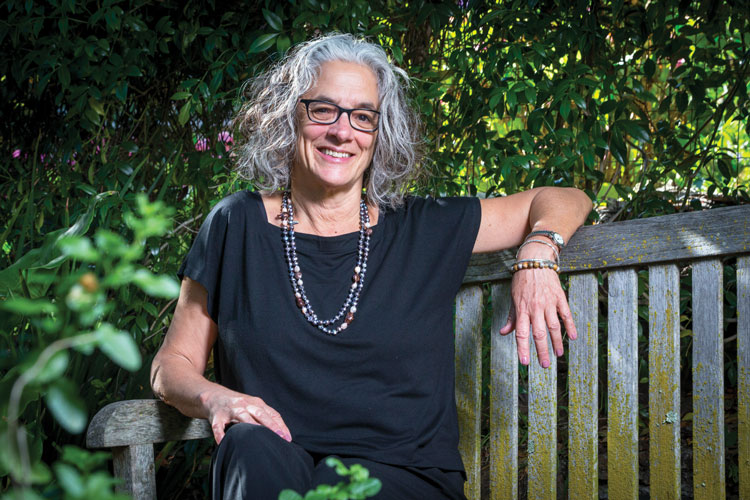Protecting digital accessibility ensures equal rights for disabled people

Lainey Feingold.
As the world has moved online, so have disability rights. Disability community activists use social media to spread the message of equality, opportunity, justice and inclusion. Disabled people and their lawyers use the law to guarantee websites, mobile applications, kiosks and other technologies are available and accessible to everyone.
If you want to know what the disability community is thinking about—and acting on—make Twitter your first stop. Find disability-related hashtags, including #CripTheVote, #AXSChat and #a11y (shorthand for accessibility). Search out activist organizations, including @DisVisibility, an “online community dedicated to recording, amplifying and sharing disability stories and culture,” and @rootedinrights, a project in which the tag line is “disability rights are human rights.”
Traditional disability rights organizations use social media, too. The Disability Rights Education and Defense Fund (@DREDF), the National Association of the Deaf (@NAD1880), the American Council of the Blind (@acbnational), the National Federation of the Blind (@NFB_voice), the American Foundation for the Blind (@AFB1921), and many other long-standing players in the disability rights world know that an online presence is crucial to today’s disability rights activism.
One part of that activism is ensuring the online world is accessible to everyone, including people who cannot see a screen, hear a video or hold a mouse. Accessibility refers to development, design, business processes and training that allow people who have disabilities to consume and interact with websites, mobile applications and other digital technology. Involving disabled people is a must.
See also: Disability rights movement’s legislative impact sprang from on-campus activism
Accessibility is about people. It’s about deaf students who have to have content in an assigned video before the next exam. It’s about blind banking customers who want to keep online account information confidential. Or seniors who have failing vision and hearing whose online communications make their day. Or the retired veteran who doesn’t have arms but loves video games.
Digital accessibility is a civil rights issue. Without it, people with disabilities are excluded from participation in today’s society.
There is a global movement to develop, protect and foster digital technology we all can use. The law is playing its part.
Courts increasingly recognize that the Americans with Disabilities Act is flexible enough to embrace the online world. State laws, other federal requirements and laws around the globe build a foundation for accessibility. Internationally, the Convention on the Rights of Persons with Disabilities, a treaty ratified by more than 170 nations (although not the United States), includes obligations for digital accessibility.
But laws and treaties are only as strong as the strategies that lawyers and activists use to enforce them. In the United States, clients and lawyers have worked to advance digital accessibility since at least the mid-1990s, when attention first turned to technology everyone can use.
Using a collaborative dispute resolution process called structured negotiation, colleagues and I negotiated our first accessible technology agreement in 1999 on behalf of blind clients who required independent access to ATMs. A year later, structured negotiation delivered the first web accessibility agreement in the country, with Bank of America. That work, along with accessibility lawsuits and government enforcement actions, is now part of disability rights history.
The ABA Commission on Disability Rights is pursuing several avenues to promote the rights of people who have disabilities. Through its project Disability Diversity in the Legal Profession: A Pledge for Change, the commission asks legal employers—firms, schools, judges and companies—to promise to recruit, hire and promote lawyers who have disabilities. The commission also has several pipeline efforts, including a mentorship program for lawyers and internships for disabled law students, with companies such as Microsoft and Prudential.
Through its policy arm, the commission sponsored two resolutions that the House of Delegates adopted last year. The first was adopted last February. It urged federal, state and local governments to pass laws or adopt policies that prohibit the termination or denial of custody, visitation or access to a child, or the ability of disabled people to adopt children or be foster parents because of that parent’s disability, absent evidence of imminent harm related to the disability. The second, adopted in August, urged governments to change their guardianship statutes to consider less restrictive alternatives.
“There still needs to be a lot of education beyond physical facility accessibility,” says Amy Allbright, director of the commission. She adds that one in five adults has a disability, and that most people will have some sort of disability in their lives. “This needs to be less about ‘This is right thing to do’ and more ‘We value the untapped talents of this group.’ Let’s give them tools to help them be productive.”
I’m confident that current strategies and others as yet untested, a strong legal foundation and the activism of disabled people will continue to advance and protect digital accessibility. Inclusion and equality today and in the future depend on it.
Lainey Feingold is a disability rights lawyer and the author of
This article was published in the January 2018 issue of the ABA Journal with the title “Disability Rights in a Digital World: Protecting digital accessibility is vital to ensuring equal rights for disabled people.”



